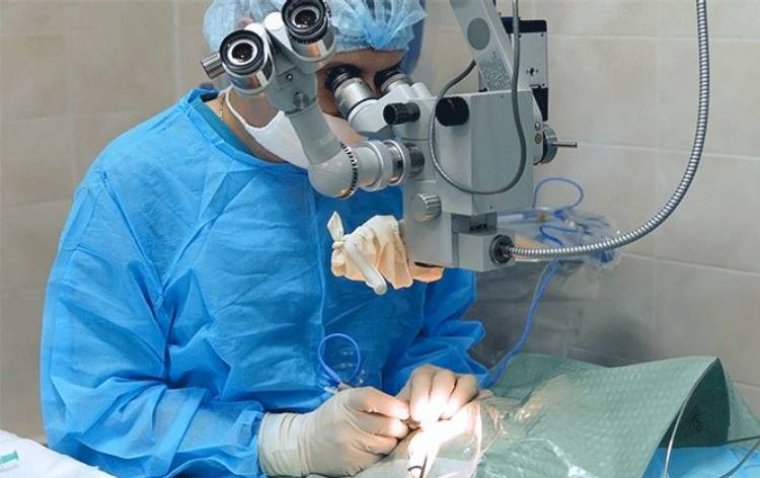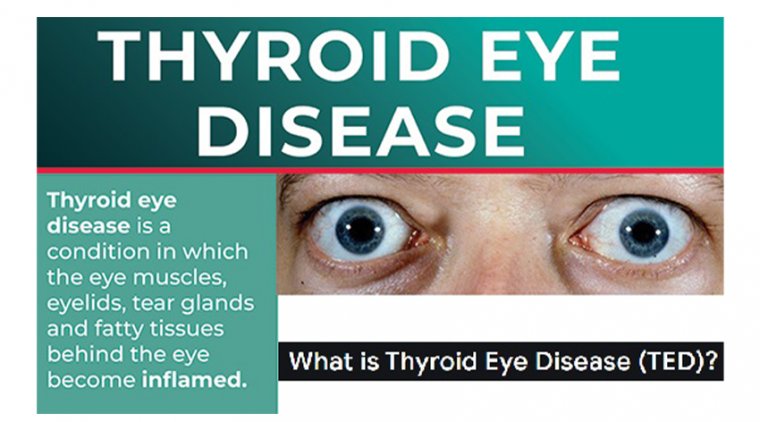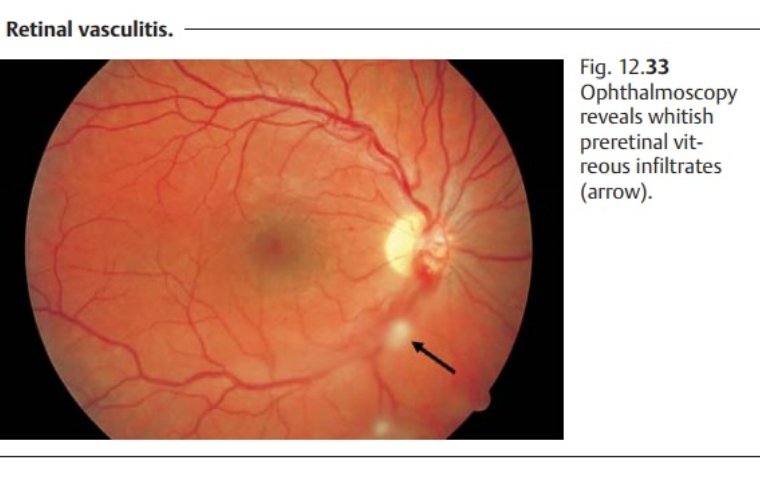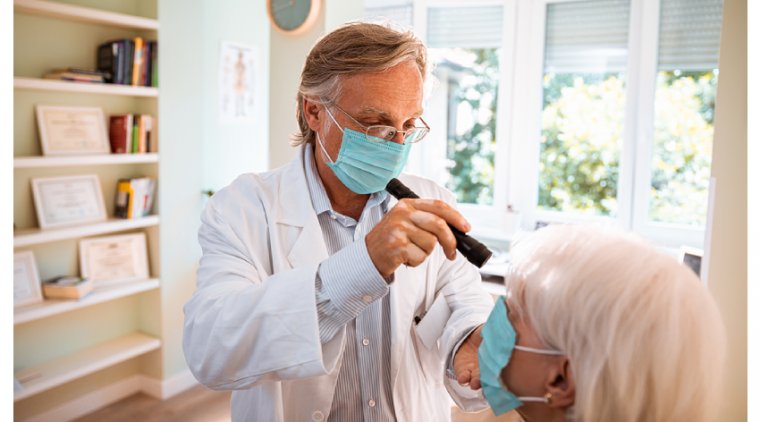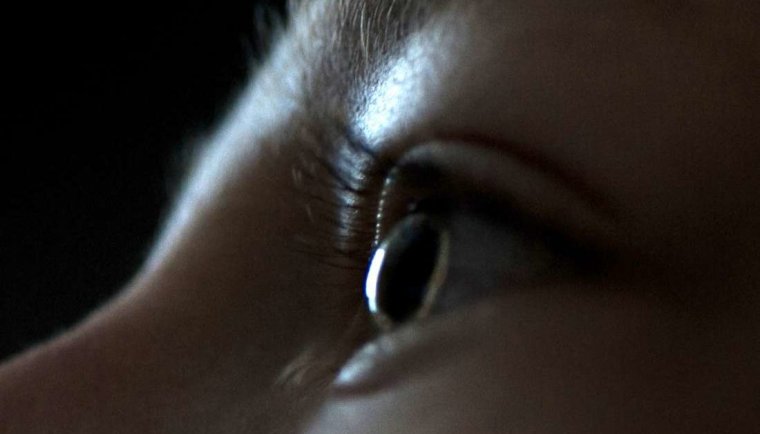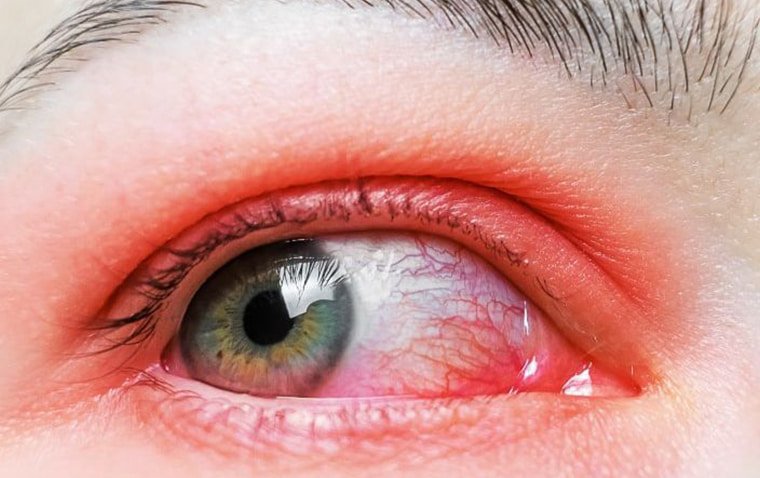
Understanding and Managing Ocular Rosacea: Symptoms & Treatment Options
Ocular rosacea is a chronic inflammatory condition that affects the eyes and is closely related to the skin disease known as rosacea.
What is Rosacea?
Rosacea is a long-term skin condition characterized by facial redness, pimples, swelling, and small and superficial dilated blood vessels. Often, rosacea affects the nose, cheeks, forehead, and chin, but it can also extend to the eyes in a condition known as ocular rosacea. Understanding what causes rosacea is crucial for managing this condition, although the exact cause remains unknown. Factors may include genetic predisposition, environmental triggers, and the presence of certain bacteria.
Symptoms and Diagnosis of Ocular Rosacea
Symptoms of Ocular Rosacea
Patients with ocular rosacea may experience a range of symptoms, often varying in severity and frequency. Key symptoms include:
• Eye Redness: Persistent redness in the eyes, often mistaken for conjunctivitis.
• Dryness: A sensation of dry, gritty eyes that may not be relieved by standard over-the-counter artificial tears.
• Irritation and Burning: Continuous discomfort in the eyes, described as burning or stinging sensations.
• Tearing: Excessive tearing or watery eyes, contrary to the symptom of dryness, can also occur.
• Swollen Eyelids: Edema (swelling) of the eyelids, which may be accompanied by redness and tenderness.
• Blepharitis: Inflammation of the eyelid margins, leading to crusted eyelashes and recurrent styes or chalazia (eyelid lumps due to blocked oil glands). For more detailed information on blepharitis and its treatment options, read Demodex Blepharitis: Symptoms, Causes, Treatment Options.
• Photophobia: Increased sensitivity to light, making it uncomfortable to be in bright environments.
• Blurred Vision: Visual disturbances due to tear film instability or corneal involvement.
Diagnostic Criteria for Ocular Rosacea
Diagnosing ocular rosacea involves a comprehensive evaluation, as there is no single test that can definitively diagnose the condition. The process typically includes:
• Medical History Review: Assessment of the patient's medical history, including any previous diagnosis of skin rosacea, and a review of ocular and dermatological symptoms.
• Clinical Examination: A thorough eye examination by an ophthalmologist or optometrist, focusing on signs of inflammation, eyelid margin abnormalities, and the condition of the cornea.
• Symptom Correlation: Correlating ocular symptoms with any dermatological signs of rosacea, as the presence of both can strongly indicate ocular rosacea.
• Exclusion of Other Conditions: Ruling out other eye conditions that can mimic ocular rosacea symptoms, such as allergic conjunctivitis, dry eye syndrome, or meibomian gland dysfunction, through differential diagnosis.
Additional Tests
While there are no specific tests for ocular rosacea, certain diagnostic procedures may be performed to assess the extent of eye involvement and exclude other conditions:
• Slit-Lamp Examination: Allows detailed visualization of the structures of the eye, identifying signs of inflammation, blocked meibomian glands, or corneal damage.
• Tear Function Tests: Evaluate the quantity and quality of tear production to identify dry eye syndrome, which often accompanies ocular rosacea.
• Skin Biopsy: Rarely, if the diagnosis is uncertain, a skin biopsy from the facial area affected by rosacea may be conducted to confirm the presence of dermatological rosacea.
Who is at Risk for Ocular Rosacea?
Ocular rosacea commonly affects adults between 30 and 50 years of age and is seen in both men and women, though skin rosacea is more prevalent in women. People with light or fair skin and those of Western European descent are at a higher risk of developing this condition.
Demographic Factors
• Age Group: Ocular rosacea is most commonly diagnosed in individuals between the ages of 30 and 50. However, it can affect people of all ages, including children, albeit less commonly.
• Gender: While skin rosacea is more prevalent in women, ocular rosacea affects men and women at a similar rate. Some studies suggest that men may experience more severe symptoms.
• Ethnicity and Skin Type: Individuals with fair skin, particularly those of Celtic or Northern European descent, are at a higher risk of developing both cutaneous and ocular rosacea. However, ocular rosacea can affect individuals of any skin type and ethnicity.
Genetic Factors
• Family History: There is evidence to suggest a genetic predisposition to rosacea. Individuals with a family history of rosacea are at a higher risk of developing the condition themselves, indicating a hereditary component.
Environmental and Lifestyle Factors
• Exposure to Extreme Weather Conditions: Extreme temperatures, wind, and sunlight can exacerbate symptoms or trigger flare-ups in susceptible individuals.
• Lifestyle Choices: Consumption of alcohol, spicy foods, and hot beverages has been linked to triggering rosacea symptoms. While these factors are more closely associated with triggering flare-ups of skin rosacea, they may also influence ocular symptoms.
• Stress: Emotional stress is a well-documented trigger for rosacea flare-ups, including ocular symptoms.
Health Conditions
• Coexisting Skin Rosacea: Individuals with skin rosacea are at a heightened risk of developing ocular manifestations of the disease. It is estimated that up to 50% of individuals with rosacea may experience ocular involvement at some point.
• Meibomian Gland Dysfunction: This condition, characterized by the dysfunction of the meibomian glands in the eyelids, is closely associated with ocular rosacea, suggesting a link between glandular health and the risk of developing ocular symptoms.
Treatment Options for Ocular Rosacea
Managing ocular rosacea involves a multifaceted approach tailored to alleviate symptoms, control inflammation, and address specific eye issues associated with the condition. Effective treatment plans often combine medical therapies, lifestyle modifications, and home care practices.
Medical Treatments
• Antibiotic Therapy: Oral antibiotics are commonly prescribed for their anti-inflammatory properties rather than their ability to fight infection. Low-dose is particularly effective in managing ocular rosacea symptoms without the risk of antibiotic resistance.
• Topical Antibiotics: Metronidazole gel or erythromycin ointment applied to the eyelids can reduce inflammation and help control symptoms.
• Steroid Eye Drops: These can be used for short-term relief of severe inflammation. Due to potential side effects, such as increased intraocular pressure and cataract formation, their use is generally limited to acute flare-ups and under strict medical supervision.
• Immunosuppressive Eye Drops: Cyclosporine ophthalmic emulsion is effective in treating chronic inflammation associated with ocular rosacea. It helps increase tear production and reduce corneal damage.
Lifestyle Modifications and Home Care
• Warm Compresses: Applying warm compresses to the eyes daily can help soften and release the oils in the blocked meibomian glands, thereby relieving symptoms. Soak a clean cloth in warm (not hot) water, wring it out, and place it over closed eyelids for about 5 to 10 minutes.
• Eyelid Hygiene: Regular cleaning of the eyelids is crucial for removing oil, bacteria, and debris that can worsen ocular rosacea. After applying a warm compress, gently scrub the eyelid margins with a cotton swab dipped in a mixture of water and a few drops of baby shampoo or an over-the-counter eyelid cleanser. Rinse thoroughly with lukewarm water. For a comprehensive guide on eyelid hygiene read our "Ultimate Guide to Eyelid Hygiene: Preventing Common Eye Conditions".
• Artificial Tears: Over-the-counter lubricating eye drops can provide relief from dryness and irritation. Preservative-free formulas are recommended to avoid potential irritation from preservatives found in some eye drops.
• Avoid Triggers: Identifying and avoiding personal triggers, such as exposure to wind, sunlight, hot environments, spicy foods, and alcohol, can help reduce the frequency and severity of ocular rosacea flare-ups.
• Dietary Omega-3 Fatty Acids: Increasing the intake of omega-3 fatty acids through diet or supplements may improve ocular rosacea symptoms by reducing inflammation. Foods rich in omega-3 include fish, flaxseeds, and walnuts.
• Protective Eyewear: Sunglasses can protect the eyes from wind and ultraviolet light, reducing symptoms for those sensitive to environmental triggers.
Advanced Treatments
In cases where conventional treatments are not effective, more advanced options may be considered:
• Intense Pulsed Light Therapy (IPL): While traditionally used for skin symptoms of rosacea, IPL has shown promise in treating ocular symptoms by reducing eyelid inflammation and improving meibomian gland function.
• Omega-3 and Omega-6 Fatty Acid Supplements: These supplements may help improve the quality of the eye's oil layer, which can be beneficial for ocular rosacea patients.
Managing Symptoms of Ocular Rosacea
Effective management of ocular rosacea involves a combination of treatments and lifestyle adjustments. Regular use of artificial tears, maintaining eyelid hygiene, and protecting the eyes from environmental factors are all crucial steps. Additionally, dietary modifications to avoid known triggers can also play a significant role in symptom management.
It's important to note that treatment effectiveness can vary from person to person, and what works for one individual may not work for another. Regular follow-ups with an ophthalmologist or dermatologist are essential to monitor the condition and adjust treatment plans as needed. Always consult with a healthcare provider before starting or changing any treatment regimen for ocular rosacea.
Complications and Prevention
Untreated ocular rosacea can lead to more serious eye conditions, including vision loss. Therefore, it's essential to follow a treatment plan and take preventive measures seriously. Regular consultations with healthcare providers can help adjust treatments as needed and monitor the condition's progression.
Living with Ocular Rosacea
Living with ocular rosacea requires a long-term commitment to managing the condition. Keeping a journal to track triggers and symptoms can be helpful. Despite the challenges, with proper management, individuals with ocular rosacea can lead comfortable and fulfilling lives.
Conclusion
In conclusion, while ocular rosacea can be a challenging condition, understanding its symptoms, triggers, and treatment options is the first step toward effective management.
There is no permanent cure for rosacea, but with the right approach, it's possible to minimize its impact on daily life. If you suspect you have ocular rosacea, consult a healthcare provider to discuss the best treatment plan for your needs.
References:
(1).jpg)

